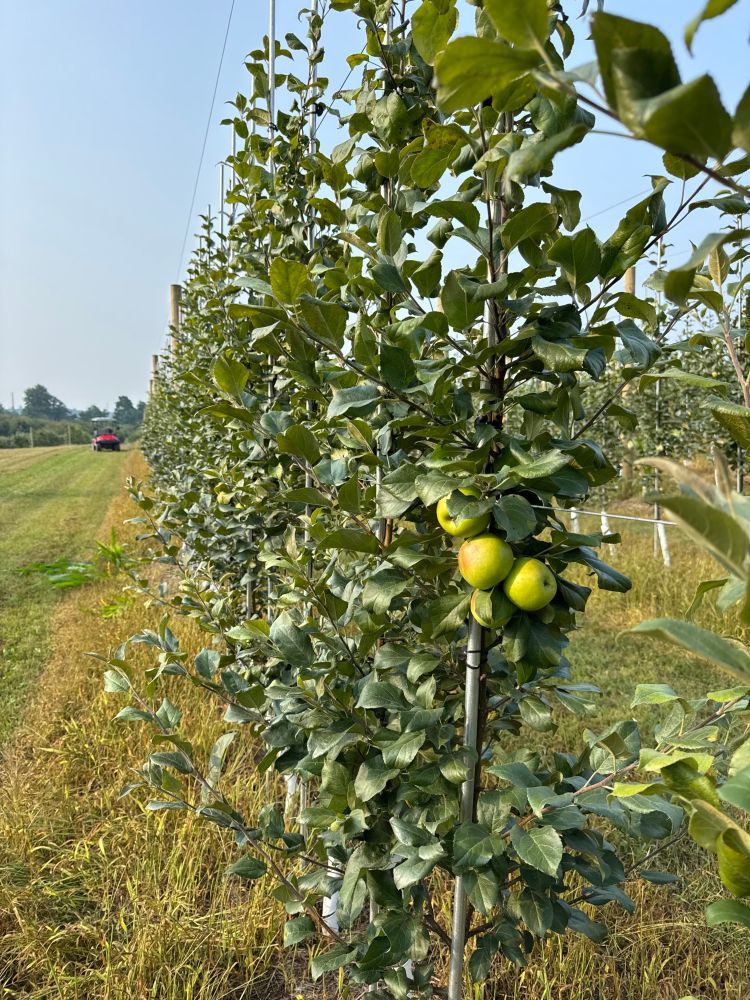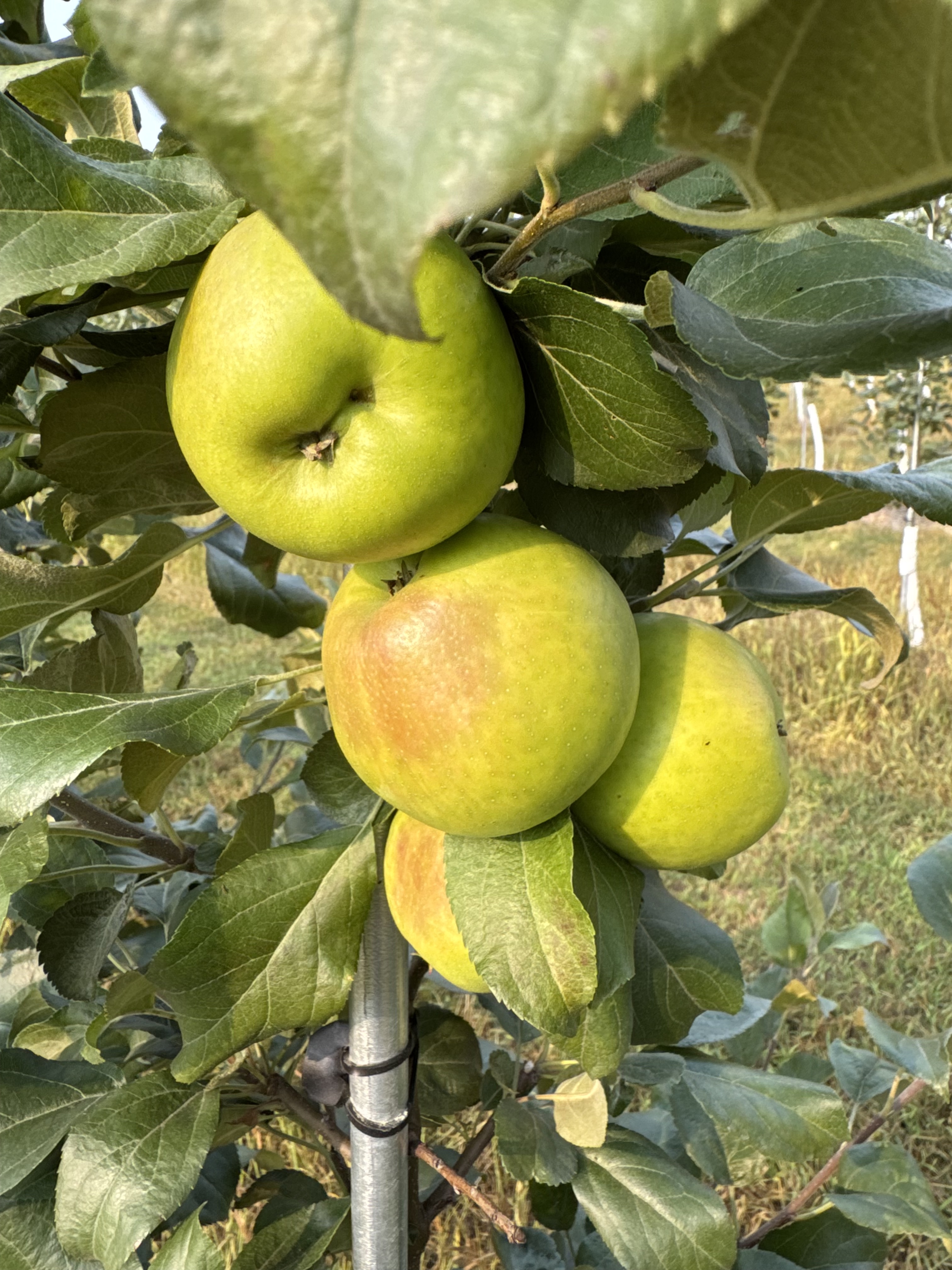Northwest Michigan fruit update – August 5, 2025
Cherry harvest has wrapped up in northern Michigan. Apricots are ripe and in the market stands.

Weather report
The weather has dried out over the last week. The last rainfall we had in northern Michigan was July 19, and the Michigan State University Enviroweather station at the Northwest Michigan Horticulture Research Center recorded a quarter inch of rain. There is a weak storm system coming from the west with a slight chance of scattered thunderstorms on Thursday, Aug. 7. However, dry conditions are predicted to continue through this week with some rain potentially in the forecast next Tuesday or Wednesday.
Temperatures are predicted to be warm, and the forecast is even saying the region will hit the low 90s this week. Nighttime temperatures are predicted to be in the mid-50s and low 60s and rise to overnight temperatures of 70 degrees Fahrenheit. The potential evapotranspiration is higher than normal with the recent dry spell. The medium range outlook is calling for warmer than normal mean temperatures and near to above normal rainfall.
Our growing degree day (GDD) averages are so close to the 35-year average. For 2025 at the Northwest Michigan Horticulture Research Center, we have accumulated 2,344.1 GDD base 42 and 1,517.4 GDD base 50. We are almost spot on to the 35-year average this week: 2,347.4 GDD base 42 and 1,515.2 GDD base 50.
Crop report
Most of the tart cherry harvest is completed in northern Michigan. I did see some empty tanks heading north of Suttons Bay, so there may be a few growers still harvesting up in Northport. However, most growers are finished, and the crop was lighter than the estimate. Growers worked hard to get fruit with the light crop load. Many growers harvested for a long time for few cherries on the trees. Spotted wing drosophila and American brown rot were problematic this year, even in tart cherry.

Disease report
Apple scab. According to the Enviroweather scab model, we are at 100% mature spores and 99% dispersed spores. Some growers are struggling with fruit scab, but most growers have scab under control in their orchards.
Cherry leaf spot. We have substantial leaf spot in our untreated checks in the efficacy trial. We also have substantial leaf spot in our managed blocks. With all the disease pressure this season, Michigan State University Extension recommends using a post-harvest spray for continued protection against the leaf spot pathogen. Chlorothalonil or captan are good choices for post-harvest control. If you have used a lot of captan this season, remember that the maximum use per season is 17.5 pounds. Growers may need a second postharvest application if the weather turns wet again. We recommend keeping leaves on the trees through September if possible.
Pest report
Codling moth. We caught a significant number of codling moth this week. In three traps, we caught four, 11 and 71 moths. These numbers are up considerably from last week when we caught an average of seven moths. We set our biofix for June 3 at the Northwest Michigan Horticulture Research Center. Based on the codling moth model and the biofix date, the model predicts second generation egglaying to begin July 24. Second generation codling moth larvae are out in orchards now. Be on alert for managing this second generation.
Apple maggot. This pest has been more present in apple blocks in northern Michigan than in past years. We do not typically see this pest be a huge issue, but this year seems to be more problematic. The Trevor Nichols Research Center has been catching apple maggot for three weeks. Be on the lookout for this pest. Imidan, Assail, Voliam flexi and Endigo are all labeled excellent for apple maggot.



 Print
Print Email
Email
